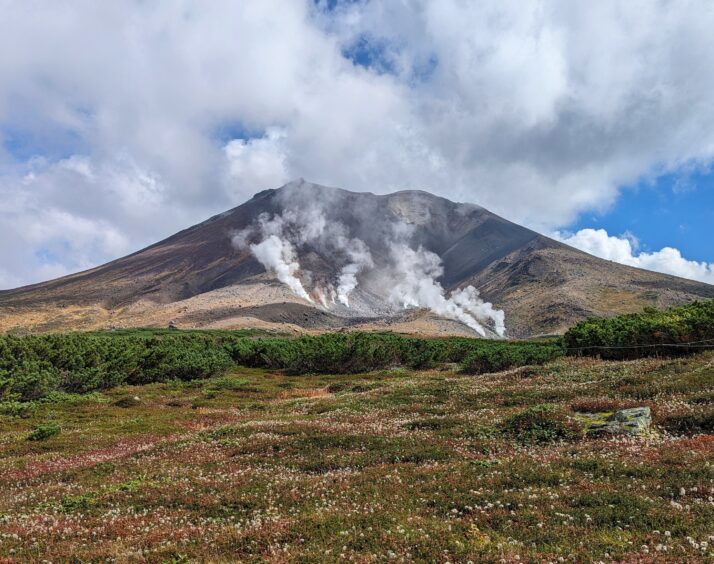
The hiking in Daisetsuzan National Park on the island of Hokkaido is sublime, featuring bubbling hot springs, steaming, otherworldly fumaroles, dramatic volcanic landscapes, wildflowers, and thick forests. During our week in Hokkaido, we visited Sapporo and spent two days in Daisetsuzan National Park, taking public transportation to get around. We were able to do three hikes in Daisetsuzan National Park, Hokkaido, Japan.
The train system made it easy to get from Tokyo to Sapporo (including a big chunk on the Shinkansen bullet train), and then to Asahikawa. From Asahikawa, we took the Ideyu-go bus, which departed from the Asahikawa train station and also stops at the airport. Our destination was Ashidake Onsen, a resort inside Daisetsuzan National Park that has several lodging options, a ropeway (cable car) and Visitor Center, and no other amenities. We stayed at a traditional Japanese hotel, Daisetsuzan Shirakaba-so Ryokan, a seven-minute walk from the ropeway.
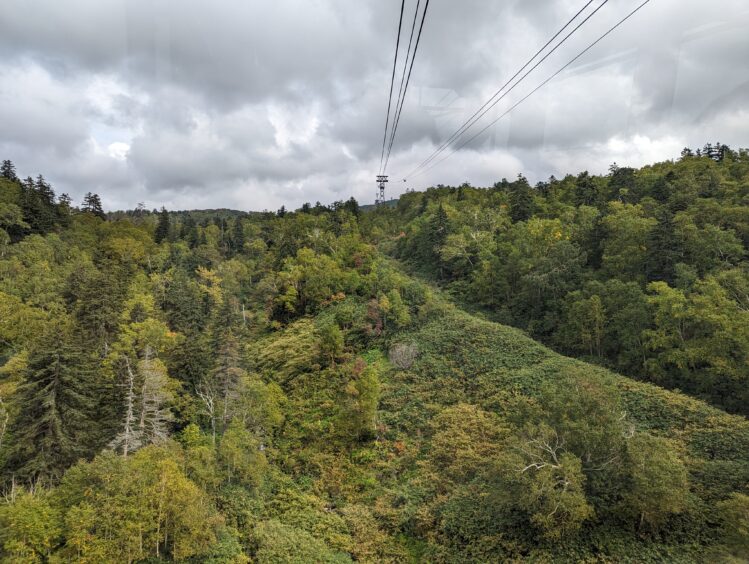
Hokkaido enjoys a short summer season, when it is quite a bit cooler and drier than southern Japan. July through September are ideal months for hiking, while winter brings cold temperatures, snow, and snow sports, including cross-country and downhill skiing and snowshoeing. We were there the first week of October, when the leaves were starting to turn, temperatures were cool in the mountains, and we dodged light rain. Ten days later, they got their first snow, and with that the hiking season was over.
We stopped by the Visitor Center in Asahidake Onsen, which is next to the ropeway station. We picked up maps and noted the information about bears. Bears are present in Hokkaido and are occasionally problematic. They marked recent sightings on a map and closed some areas to hiking.
After we obtained maps at the visitor center and snacks at a snack bar in the ropeway building, we purchased tickets for the cable car and were whisked part-way up Mount Asahidake.
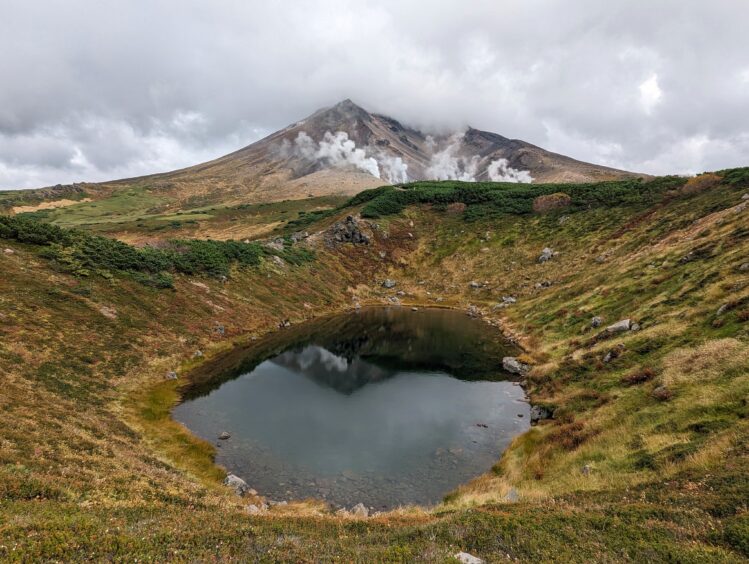
As the ropeway ascended, we left the forest behind, replaced by short shrubbery and, finally, low grasses and bare soil. The Sugatami Pond Loop was a one-mile hike that nearly every able-bodied visitor did after taking the ropeway up. It was a well-developed hike that had some of the most dramatic scenery on display. As soon as we walked a short distance up a bluff, we immediately saw what draws people to the area. Against the backdrop of Mt Asahidake, the highest peak in Hokkaido, lay many reflecting ponds cradled by volcanic rock and the otherworldly sight of multiple clouds of steam hissing from fissures in the earth above molten rock. A faint acrid sulfurous odor reinforced the dynamic nature of an active volcano, emitting gases from inside our planet.
Plan on at least an hour for this short hike because every viewpoint deserves time to take in the dramatic views and appreciate the striking beauty. We extended the hike by continuing on the trail that leads to the top of Mt. Asahidake (7,516 feet), but threatening black clouds sent us scurrying back to the ropeway before we could summit.
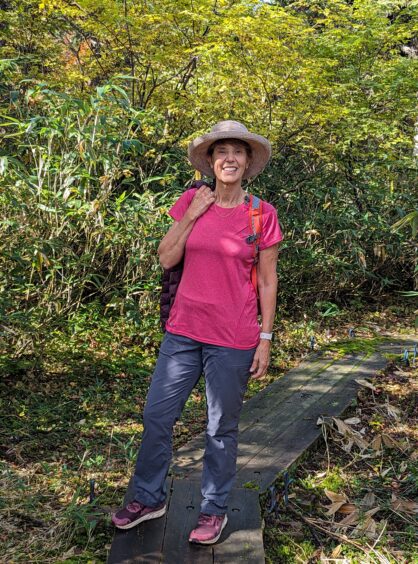
There are a few nature trails in the Asahidake Onsen town. One short trail goes behind the Visitor Center and Ropeway. Another is a slightly longer hike that leads from the ropeway station through an overgrown trail to the lodging below. And one is a 3.15-mile trail that starts directly across the street from the Daisetsuzan Shirakaba-so Ryokan.
The longer 3.15-mile trail was an easy hike on a relatively flat trail with occasional boardwalks through marshy areas and showed off the thick vegetation at this altitude. We chose this trail in the morning because the weather was unsettled after raining most of the night.
I was unable to search for trails in Hokkaido by name in GaiaGPS or Alltrails, two free map apps I use, but when I opened the apps, this and other trails we hiked appeared and were easy to follow.
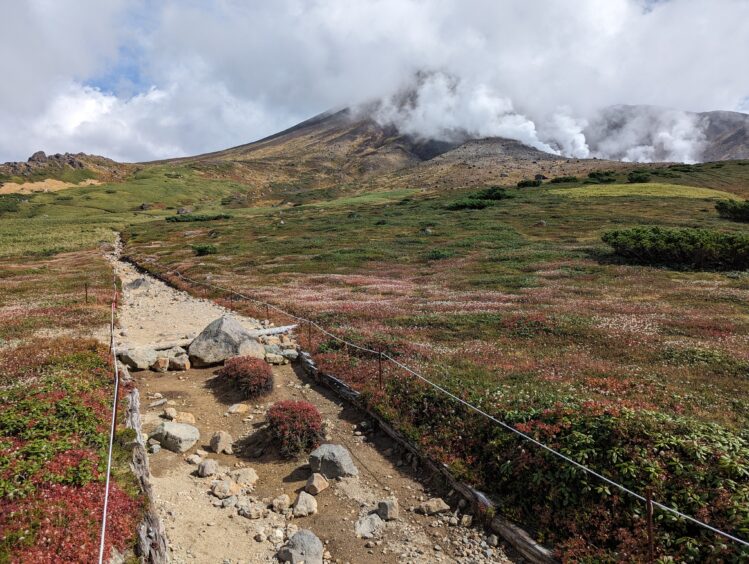
After doing the Nature Trail, the weather cleared, and we took a chance to go up the ropeway again. This time, we headed left (NW) at a junction near the beginning of the Sugatami Pond Loop toward Nakadake Onsen. This was a six-mile round trip out to the natural hot springs and back that traversed the side of the mountain, displaying majestic views that were ever-changing, opening up to coax us toward the next valley. The trail undulates up and down with around 1,000 feet of elevation gain and took us 4.5 hours, including a lengthy foot soaking at the hot springs.
This hike forms one leg of a longer loop that goes higher and around the backside of the mountain, so that is an option for hikers with more time and clear weather. The loop is mapped on AllTrails.
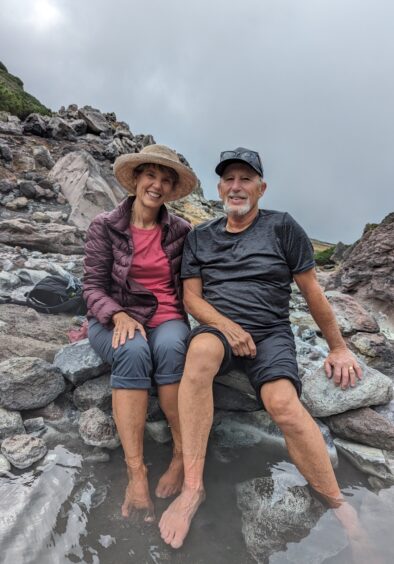
If you’re interested in longer hikes, here are two more options.
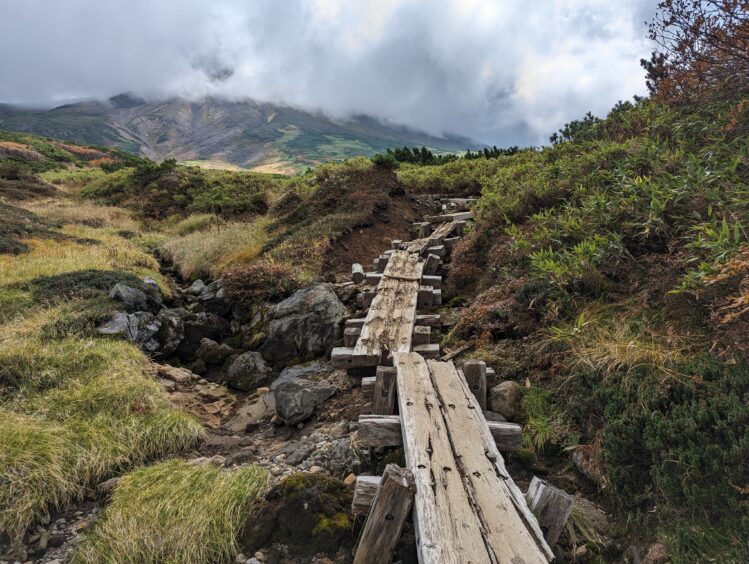
Our three hikes in Daisetsuzan National Park, Hokkaido, Japan provided an opportunity to see unique ecosystems in the area and appreciate the abundant natural beauty. The hiking at Daisetsuzan National Park was inspiring and I could easily spend more time there.